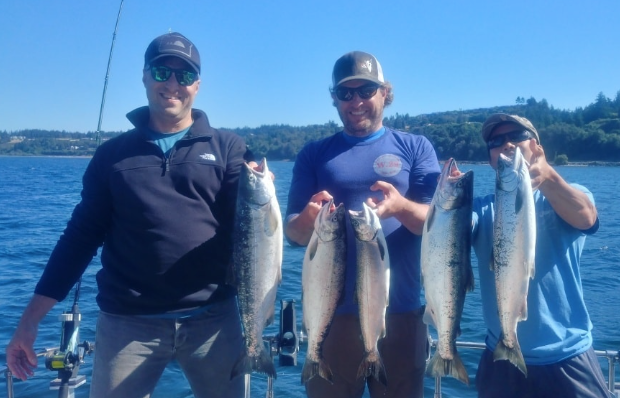Spring is a great time to go salmon fishing in Seattle. The weather is mild, the fish are hungry, and the scenery is stunning. If you’re new to salmon fishing, or if you’re just looking for a refresher, here’s a guide to help you get started:
When to go
The spring salmon fishing season in Seattle typically runs from March to April. However, the best time to go fishing will vary depending on the type of salmon you’re targeting. Chinook salmon are the first to arrive in the spring, followed by Coho salmon. Pink salmon typically arrive in late spring.
Where to go
There are many great places to go salmon fishing in Seattle. Some popular spots include:
- Puget Sound: Puget Sound is a saltwater basin that is home to a variety of salmon species. Popular fishing areas in Puget Sound include the San Juan Islands, Whidbey Island, and the Kitsap Peninsula.
- Lake Washington: Lake Washington is a freshwater lake that is located in the heart of Seattle. It is a popular spot for fishing for Chinook and Coho salmon.
- Lake Sammamish: Lake Sammamish is another freshwater lake that is located near Seattle. It is a popular spot for fishing for Chinook salmon.
What gear to use
If you’re new to salmon fishing, it’s best to rent gear from a charter company. However, if you’re planning on fishing regularly, you may want to invest in your own gear. Here’s a basic list of what you’ll need:
- Fishing rod: A medium-heavy action rod that is 7-8 feet long is ideal for salmon fishing.
- Fishing reel: A baitcasting reel or a spinning reel with a line capacity of at least 200 yards is ideal for salmon fishing.
- Fishing line: A monofilament or braided line with a test weight of 15-20 pounds is ideal for salmon fishing.
- Lures: There are a variety of lures that can be used for salmon fishing. Popular lures include spoons, spinners, and plugs.
How to fish
The two most common methods of salmon fishing are trolling and mooching.
- Trolling: Trolling involves dragging lures behind a moving boat. To troll for salmon, simply attach your lure to your fishing line and then attach the fishing line to your rod and reel. Then, cast the lure out behind the boat and let it drag as you move forward.
- Mooching: Mooching involves casting lures at individual fish. To mooch for salmon, simply cast your lure out and then reel it in slowly. As you reel the lure in, watch for fish that are following it. If you see a fish following your lure, pause reeling and let the lure sink. Then, start reeling again slowly. This will often entice the fish to strike.
Tips for success
Here are a few tips for success when salmon fishing in Seattle:
- Fish early in the morning or late in the evening. Salmon are most active during these times of day.
- Fish near areas where salmon are known to feed. These areas include baitfish schools, river mouths, and drop-offs.
- Use a variety of lures and techniques. Salmon can be picky, so it’s important to experiment until you find what works.
- Be patient. Salmon fishing can be challenging, but it’s also very rewarding.
Conclusion
Spring salmon fishing in Seattle is a great way to experience the outdoors and catch some delicious fish. By following the tips in this guide, you can increase your chances of success.
Additional tips for spring salmon fishing in Seattle:
- Focus on Chinook salmon. Chinook salmon are the largest and most prized salmon species, and they are abundant in Puget Sound during the spring.
- Fish in areas with a lot of baitfish. Salmon are attracted to baitfish, so fishing near baitfish schools is a great way to increase your chances of success.
- Use bright and flashy lures. Salmon are attracted to bright and flashy objects, so using lures of these colors is a good way to get their attention.
- Be patient. Salmon fishing can be challenging, but it’s also very rewarding. Don’t get discouraged if you don’t catch a fish right away. Just keep fishing and trying different techniques, and you’ll eventually be successful.
If you’re new to salmon fishing, it’s a good idea to book a charter with a reputable company. This will ensure that you have access to experienced captains and crew who can help you catch fish. It’s also a good way to learn about the different salmon species and fishing techniques.


Recent Comments